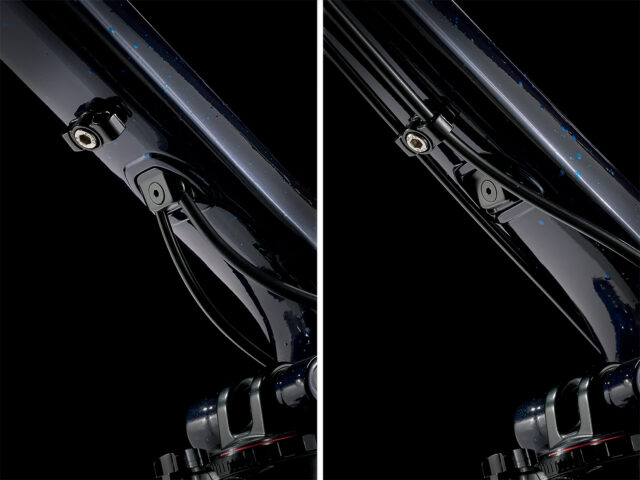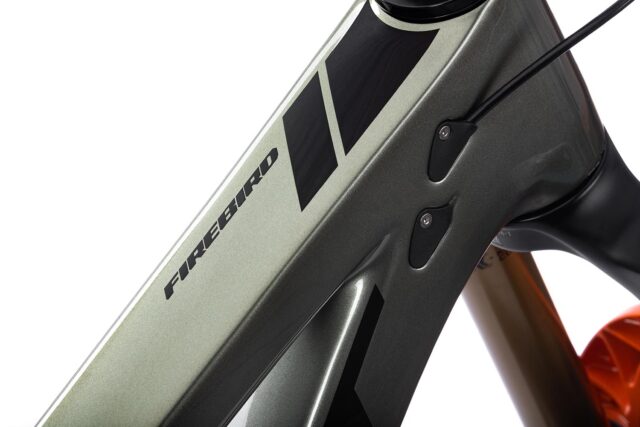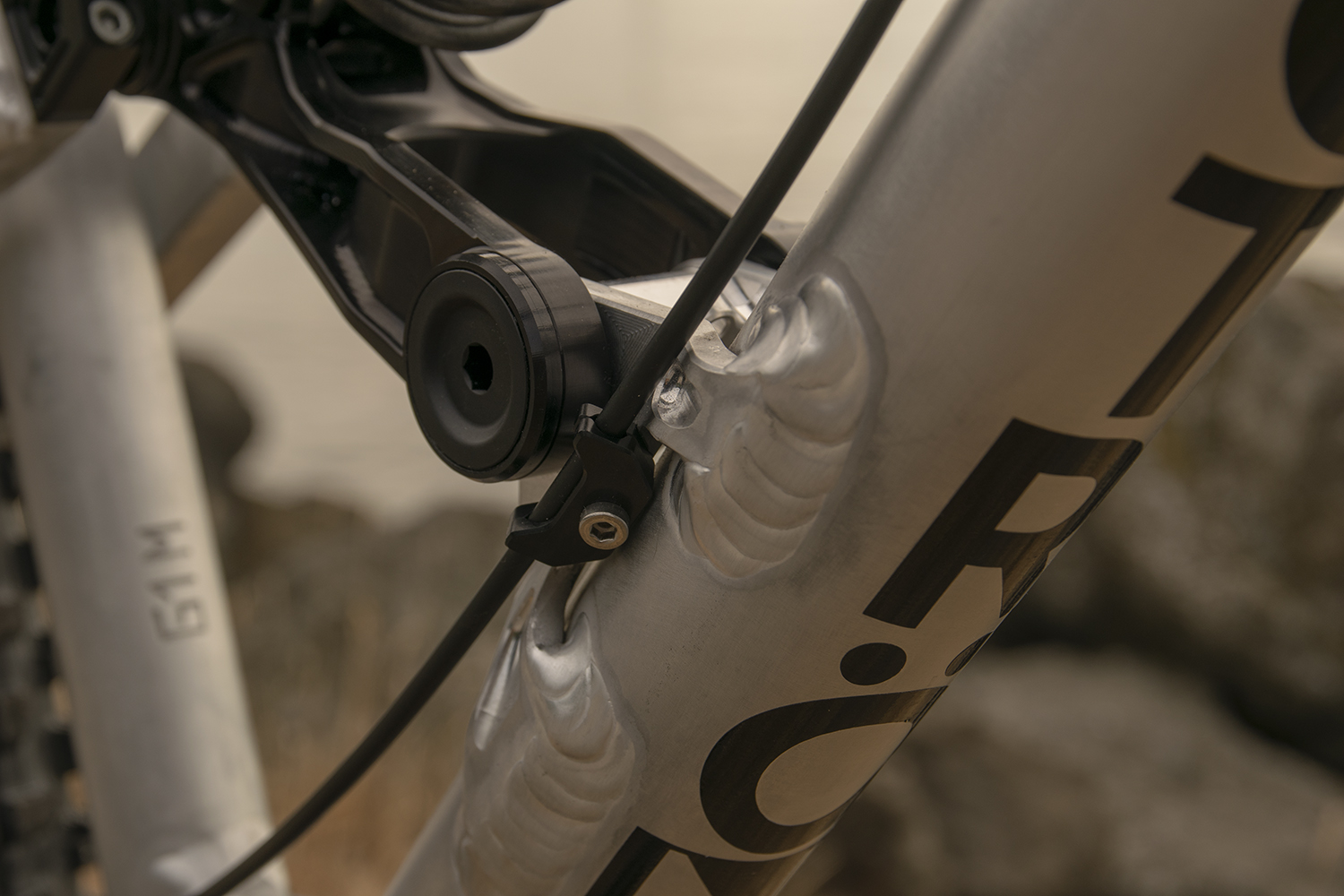Why Internal Cable Routing Sucks
Internal cable routing is becoming more and more common on mountain bikes, and I wish it would go away.
Sure, it maybe looks a little cleaner, and I’ll admit that if it’s implemented well it isn’t all that hard to set up. But it’s still a case of making something functionally worse for the sake of aesthetics, and I don’t have much patience for that.
Let’s lay out the reasons why internal routing is fundamentally a worse option:
(1) It’s still more work to set up. Now, as I said up top, it doesn’t require that much more time and effort than external routing, provided that the internal routing is implemented well. Granted. But for one thing, it often isn’t. I was working in a bike shop back in the days when internal routing first started appearing on time trial bikes, for aero reasons. Those bikes were a nightmare. Fishing cables through unguided ports with tiny openings often took hours, and housing lengths needed to be set with millimetric precision to stop cables from snagging and binding.
And while things have improved (at least on mountain bikes — I haven’t touched a TT bike in probably 15 years), it’s still not always smooth sailing. Some routing just requires weird bends inside frame tubes that are hard to get housing to follow. Other times ports are tiny and inaccessible. I once spent a very frustrating evening trying to fix a friend’s bike in a hotel room after one of the housing guide tubes on their bike came dislodged inside the frame, such that the tube guided the housing well away from where it needed to exit the frame. There’s just more possibility for things to go wrong and turn into a nightmare — even if most of the time it doesn’t.
And there are still downsides if things do go well. In particular, it sucks whenever you need to install or remove a brake — you need to disconnect a brake line, cut off the old fittings (thereby shortening the hose), and install a new barb and olive. While you can definitely successfully bleed a brake on a bike, it’s often easier to take the brake off to get the hose oriented vertically and get every single bubble out. If you damage something on a trip it’s a whole lot nicer to just need a multi-tool and a few zip ties to make a brake swap. And in my case, as someone who’s constantly swapping parts on and off various bikes to test, dealing with internally routed brakes just means more time, more effort, and more money spent on replacement parts for no good reason.

(2) Internal routing can be noisy. Especially on bikes that forgo fully-guided routing, it’s very common for cables to rattle around inside frame tubes and make a racket. Sure, you can take steps to mitigate the noise, like adding foam housing dampers around the cables, but it’s still more effort and expense to deal with. I’d be more willing to deal with internal routing if it was annoying once, when first getting set up, but having a noisy bike so that it can look 0.004% better (that’s the exact number, I checked) is unacceptable.
(3) Even if you have the most dialed, fully-guided routing that addresses my complaints about setup and noise (though the brake hose thing still stands) it still poses a problem: what if you want to run your cables differently than the frame designer intended? You’re hosed. (Sorry.) Maybe you run your rear brake on the left side of the bar; maybe you prefer to run the cables on the same side of the headtube as the controls that they’re attached to. Whatever the case, with external routing you can generally swap locations around and make something work. If your routing is dictated by where the tubes are running through the frame, you really don’t have any choice.

I’m not saying any of these issues are total showstoppers, and internal cable routing wouldn’t stop me from buying a given bike if it was what I wanted otherwise. And I’ll also grant that internal routing (at least through the seat tube) does make sense for dropper posts, in order to simplify their inner workings. I can also get on board with routing the derailleur housing through the chainstay to protect it from chain slap and keep things quiet. But overall, internal routing is just a case of making things worse for aesthetics — and I don’t even think it’s much of a visual improvement. My new Nicolai G1 has the brake hose and derailleur housing routed very, very externally — way out on the outsides of the downtube — and you know what? It looks fine. It’s quiet. And it’s incredibly easy to work on. Maybe it’s just the grouchy mechanic in me talking, but seeing well designed external routing makes me happy, and there’s undoubtedly a sort of beauty in that.
So what do you think? Am I just a grouch, making a mountain out of a molehill, or is internal routing an unnecessary scourge being pushed on us for no good reason? Let us know in the comments.


Couldn’t agree more. Just did a brake swap on my Scout (farewell Guides, you won’t be missed) and while it wasn’t too difficult it was certainly more difficult than it needed to be, plus cutting the hose left me with less length than I probably should have. That combined with the rattling makes me wish they’d just gone with external routing
On carbon bikes it’s easier to have really nice internal guides and keep the noise down, so I’m down for internal routing there. Alloy bikes, though, should probably stick to external routing.
Exactly what you said.
No benefit, lot’s of drawbacks, some big, some small, but still, we are only loosing, with nothing gained.
Couple thoughts.
1. Don’t some evils run just the brake cable external? This seems to be an ok compromise.
2. For the most part dropper cabling HAS to be internal.
3. Otherwise I do generally agree with the other points. With a fully routed internal carbon frame it’s fine, otherwise so bad. And a huge pain on swapping brakes.
4. That said this is really cool: https://www.vitalmtb.com/news/press-release/No-More-Brake-Cables-Theyre-Hidden-in-Maguras-Wild-Looking-Cockpit-Integration,2898 I just wouldn’t want to have to work on it.
Transitions run their brakes externally as well.
Personally, I really like well executed tube-in-tube internal routing for derailleur and dropper, and find it even easier to work on than external routing. Just shoot the housing in one and and it pops out the other side, no zip ties needed.
Unguided internal runs, no thanks.
It may be faster to run housing internally though guides than to to attach it to outside guides, but it is still les convenient.
Recently, my daughter broke her rear derailleur. Only 12 speed Shimano rear derailleur I could find was on ebay. While I waited for that to arrive, I put the drive trail from my fatbike on her mtb. Due to internal routing, I had to cut and toss a cable both when moving it to the mtb and when moving it back.
With external routing, I old have unbolted it, unbolted the guides or shipped zip ties, and put the whole thing on the other bike. Fast, and far less wasteful.
I’m in 100% support of external routing. When you have to remove a bb to install a new shift cable or remove the rear brake/housing in order to service the rear triangle, in my opinion is a huge fail.
Spot on. So much easier to swap or adjust cables when they are routed externally. Internal cable routing for aesthetic reasons reminds me of flip up headlights on cars from the ’80s.
A-f’ing-men. I’m ok with internally routed for cables, but it’s a huge negative to me for brake housing. It’s so much easier to do a good full bleed of a rear brake if you can just snip some zip ties and pull it off the frame. Props to Transition for sticking by this, and going back to full tube-in-tube for the cables. Another good design (mostly) is GG’s cable cover on the side of the downtube, although it really should be on both sides, as setting up a dropper is pretty finicky to get the right length. It also ends a bit too short of the head tube, causing a lot of rub unless you use frame protection.
Totally agree and have gone out of my way to avoid it. It means my mtn bike is a 2014 (although last gen Banshees and some other recent metal framed bikes have external so I can still get more “modern”). My road bikes are all external (and steel FWIW).
It was road bikes that made initially made me puke with internal routing and I swore I’d never use it. When shimano’s sti’s went under the tape with the shifter cable, your shifting would be guaranteed terrible if it was internal as it always equaled more friction. External, no problem.